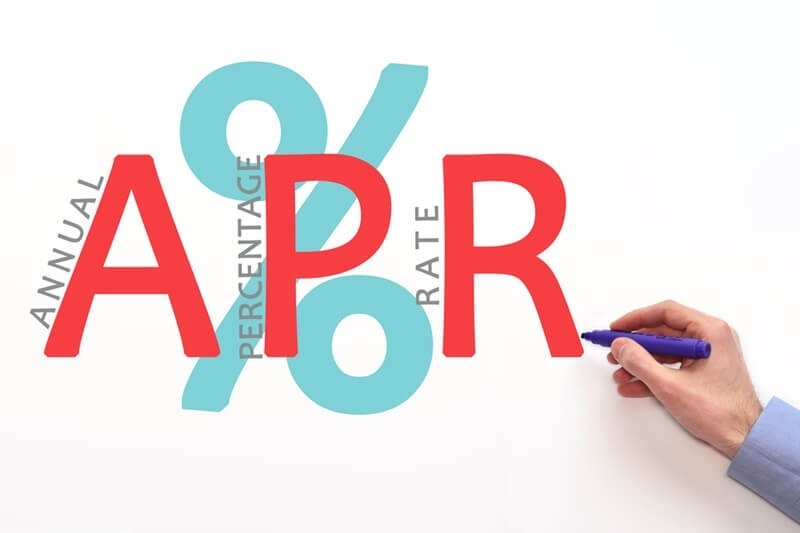
When you accept cash to borrow, one fundamental thing you need to know is how interest rates work. It is common for consumers to sign loan papers without any understanding at all as to their future liability. This lack of knowledge can lead to shock and additional financial stress. By understanding how interest on a loan operates, you can make better decisions, save cash, and avoid unnecessary debt.
This guide will teach you about the most important aspects regarding interest rates. It will discuss APR, loan terms, the cost to borrow, and how to compare loan offers correctly. By the end of this guide, you will feel confident when you review any loan papers and make financial decisions.
When you get cash, the one who gives it charges you for using it. This charge is the interest rate. It’s often shown as a part of the cash you get, also known as the main.
For example, if you get $1,000 with an interest of 5% per year, you will owe $50 in interest after one year. This seems simple, but it can get harder with longer loans, changing rates, or more fees. That’s why knowing how loan interest works is key for anyone who gets cash.

Many use APR, which means Annual Percentage Rate. If this made you puzzled in ads, you're not alone. So, here's APR in simple words:
APR is the real yearly cost to borrow, not just the interest. It counts interest plus other fees like loan handling charges or service costs. This makes APR show you how much you will fully pay.
For example:
When you match loans, APR shows the full cost, not just the easy numbers.
Interest rates are just one piece of borrowing. Another big thing is the loan term, or how long you have to pay back the cash. For loan terms for new people, here's what you need to know:
Picking the correct term depends on your cash flow, costs, and money goals.
Before you sign for a loan, you must know the full cost of getting cash. These basics will help:
By adding these up, you can see the full money hit of the loan. Even if the monthly pay seems small, the total pay might be much bigger than you think.
Now, let’s look at how interest is figured out. Lenders do this in a few ways, and knowing them can save you cash. Here are some easy interest calculation tips:
Knowing which way is used will let you know how much the loan will cost over time.
When you pick a loan, you will see options for fixed and variable interest rates. Here's what they mean:
If you like knowing what to expect, fixed rates are safer. If you're okay with payment changes, variable rates could cost less when market rates drop.
Looking at different loan options is smart. It helps you find the best deal. Here's what to do:
Sometimes, a loan with a higher interest rate but no fees is cheaper than one with a lower rate but big fees. Comparing can save you a lot of time.
There are several things people get wrong when borrowing money. Here are some things to look out for:
By avoiding these errors, you can make smarter money choices and keep your debts manageable.
When you apply for credit, your credit score will determine the interest rate you'll pay. The higher the credit score, the more likely you are to prove reliable, which will usually correspond with a lower interest rate. The lower your credit score, the higher your rate will be, and the wiser you will have to be about new credit.
If you can establish a credit score before applying for a loan, it will not only save you money, but it can also improve your rate. You can establish credit by doing a few simple things, like making payments on time, reducing credit card debt, and being cautious about applying for more credit.
Imagine borrowing $10,000 for 5 years.
This shows how a small change in rate can mean a big difference in cost.
Getting a loan can help you meet big goals like buying a house or starting a business. But not knowing about rates could cost you more than expected.
Knowing about APR, loan terms, and costs helps you make the right decision. Learning how to figure out interest and compare loans keeps you from costly traps.
Loans are commonplace; however, you should never let them confuse or cause you stress. Understand the basics - what interest is, how it is calculated, what an APR is, and how loan terms affect what you pay. Understanding all aspects of the loan - fees, terms/conditions, and total cost will help give you perspective. The better you understand the basics, the better you will understand your financial obligations. Always compare offers, because even a small difference in rate or fee can add up.
Ultimately, understand rates will protect you and your money. Having this knowledge you can make informed choices, you can avoid hidden issues, and you can better manage your debt while working towards your goal.
This content was created by AI